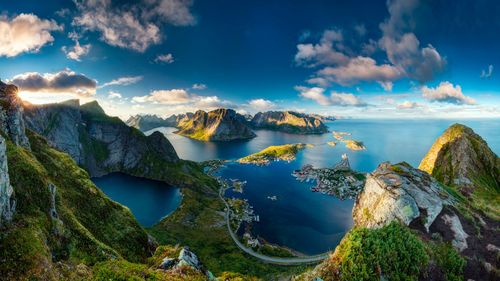Exploring Nicaraguan Culture: A Journey Through Food and Festivities
Nicaragua is a country that is rich in culture, with a diverse range of traditions and celebrations that are unique to the area. From vibrant festivals to delicious culinary experiences, there is so much to discover when exploring Nicaraguan culture. In this article, we will take a journey through some of the most iconic aspects of Nicaraguan culture, focusing specifically on the topics of food and festivities.
Food in Nicaraguan Culture
One of the best ways to experience Nicaraguan culture is through its food. Nicaraguan cuisine is a blend of indigenous and Spanish flavors, with influences from African and Caribbean cuisine as well. Some of the most popular dishes in Nicaraguan cuisine include gallo pinto, quesillo, vigorón, and nacatamal.
Gallo pinto is a traditional breakfast dish made with rice, beans, and various spices. Quesillo is a type of cheese that is rolled in a tortilla, and vigorón is a refreshing dish made with yucca, cabbage, and pork rinds. Nacatamal is a traditional dish that is often eaten on special occasions and is made with masa, pork, and vegetables.
When visiting Nicaragua, it is easy to find markets and restaurants that showcase these delicious dishes. However, one of the best ways to truly experience Nicaraguan cuisine is to learn how to cook it yourself. Many cooking classes are available in Nicaragua, where locals teach visitors how to make various Nicaraguan dishes.
Festivities in Nicaraguan Culture
Nicaragua is a country that is full of celebrations and festivities throughout the year. One of the most famous celebrations is the Semana Santa, or Holy Week, which is celebrated in April. During this time, the streets are filled with parades and processions, and visitors can experience the festivities firsthand.
Another popular celebration in Nicaragua is the Festival de San Sebastian, which takes place in January in the town of Diriamba. This festival is a celebration of the town’s patron saint, and it includes fireworks, music, and dance. Many other festivals take place throughout the year, each with its own unique traditions and customs.
One of the most interesting aspects of Nicaraguan festivities is the use of masks. Masks are worn during many festivals, and they represent various characters, such as animals or historical figures. These masks often have great cultural significance and are an important part of Nicaraguan culture.
Conclusion
Exploring Nicaraguan culture is a fascinating journey that is full of unique experiences. From delicious culinary delights to vibrant festivals and celebrations, Nicaragua has something to offer for everyone. By immersing yourself in Nicaraguan culture, you can gain a deeper understanding of the country’s rich history and traditions. Whether you are a foodie, a history buff, or simply looking for new experiences, exploring Nicaraguan culture is not to be missed.
(Note: Do you have knowledge or insights to share? Unlock new opportunities and expand your reach by joining our authors team. Click Registration to join us and share your expertise with our readers.)
Speech tips:
Please note that any statements involving politics will not be approved.
